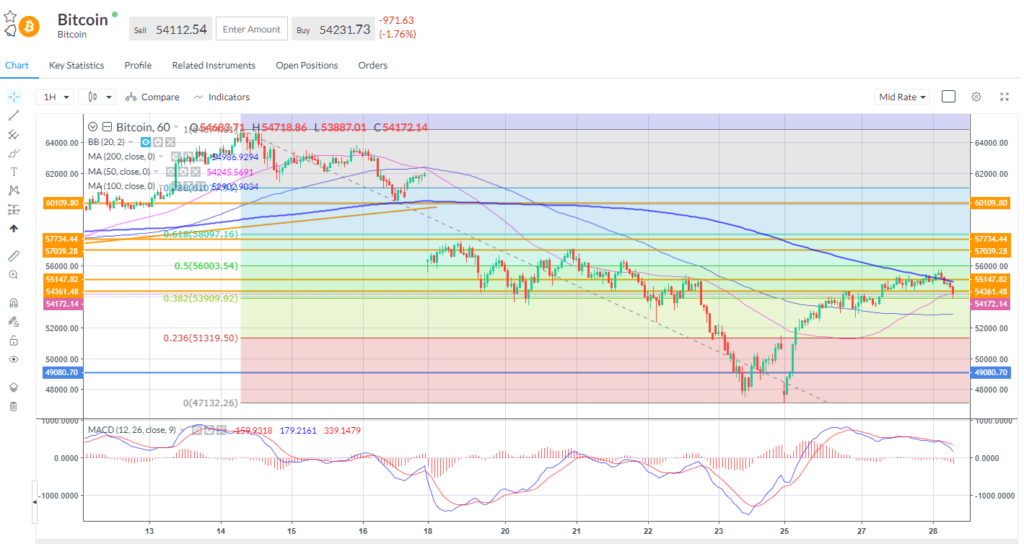
Wednesday Apr 28 2021 07:17

6 min
Perhaps the single biggest question mark over the broader economic picture and the macro-outlook is one of inflation. This is the key doubt we might have about the current pace of Fed policy and its willingness to look through what it sees as temporary rises in prices. Over the next few months, we will get a great deal more clarity over just how strong the inflation impulse is, how long it is likely to last and what this will imply for the path of inflation expectations, Treasury yields and Fed policy. The Fed says it will look through this – the question is really whether this is the right thing to do.
Quite apart from the asset price inflation we have seen for years; even by the relatively narrow gauge of inflation used by central banks, the kind of pricing pressures we are seeing seem pretty unprecedented. I think you are going to see Powell, Lagarde and co kind of get slapped around the chops by some hefty inflation prints over the next few months. Question is can they tough it out – bond yields will almost certainly move in one direction higher. The phrase ‘be careful what you wish for’ springs to mind.
Commodities are roofing. Corn, wheat and soybeans are trading around eight-year highs while coffee and sugar are also up strongly. It looks like there is a perfect storm of pricing pressures in the form or weather-related supply constraints and surging demand. Several factors at work: bad weather in the Upper Midwest has hit corn, whilst drought conditions in the Dakotas could also impact wheat and soybeans. The crops in South America are known to be lower this year, and demand is peaking in China and other Asian nations. Lumber prices seen a well-documented rally on a post-pandemic building boom. Copper is at a 10-year high on a mix of surging demand and supply problems in Chile, while palladium is at a record. Massive infrastructure spending is a factor, so too a major rebound in demand and supply constraints.
Last week’s PMIs told the story that has been talked about in this column for some months now. US manufacturing PMI reported input costs increased at the sharpest rate since July 2008 on severe supplier shortages and marked rises in transportation fees. The increase was the second-fastest on record as firms continued to partially pass-through costs to clients. And importantly clients can cope – consumer confidence is high, stimulus cheques have filled the coffers and people are ready to spend.
In the UK, IHS Markit recorded that rapid cost inflation persisted across the UK private sector, led by higher fuel bills, staff wages, commodity prices and freight surcharges. “A combination of greater operating expenses and stronger customer demand meant that average prices charged continued to increase at one of the fastest rates for the past three-and-a-half years,” the composite PMI reported told us.
In Europe, average input prices for manufacturing and services rose at the sharpest rate for ten years. Higher costs are usually being passed on to customers. “Average prices charged for goods and services rose at the fastest rate since January 2018, fuelled by a record increase in goods prices … Prices charged for services rose only modestly by comparison, though showed the biggest increase since the start of the pandemic,” the report said.
Meanwhile corporates are flagging the cost input inflation. Earnings calls have been charged with references to higher commodity and transport costs, which they will pass on to consumers. The comments from executives suggest their views do not seem to match squarely with the Fed’s view on a temporary inflationary impulse. The Fed looks set to be too accommodative for too long. It will ultimately need to start hiking rates really fast – if it wants the cycle to be a long one, it will need to act fast at the end of it.
Lumber prices roof to all-time high
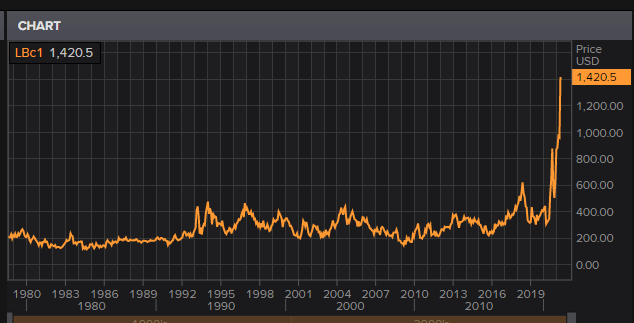
Corn highest since June 2013, +37% YTD
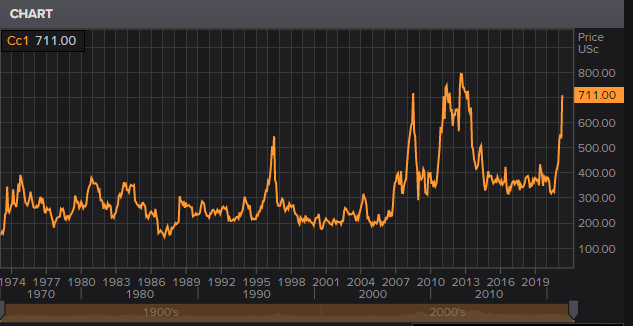
Wheat highest since February 2013, +16 YTD
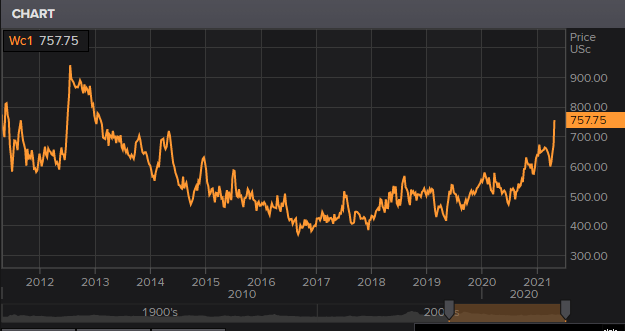
Grain and oilseed compared
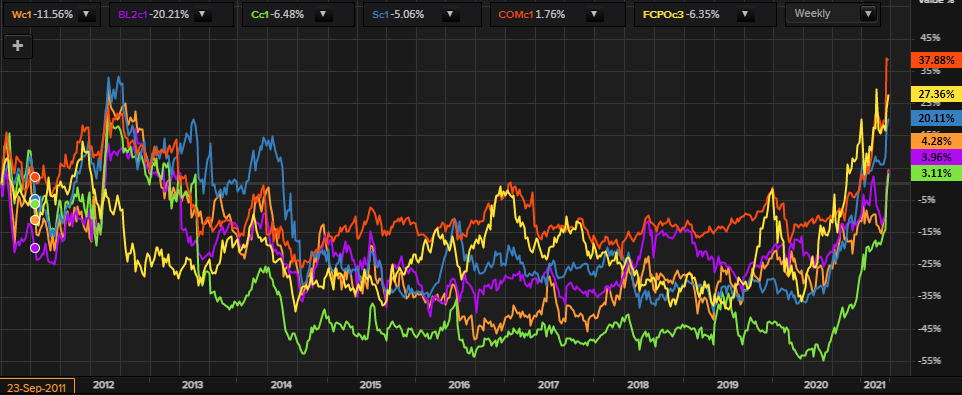
Treasury yields rose yesterday, with the 10-year yield up at its fastest pace in 4 weeks to 1.64% ahead of the Fed statement today. Stock markets in the US were flat yesterday, whilst European bourses fell slightly. Big tech largely delivered: Alphabet shares jumped 4% as it reported a massive earnings beat as YouTube ad revenues rose 50% year-on-year. Total earnings were up 34% to $55.31bn vs $51.70 expected, as earnings per share hit a lofty $26.29 vs $15.82 expected. Cloud revenues were up 46%. Meanwhile Microsoft also reported earnings and sales that beat analyst expectations, driven by growth in the cloud. Still, with shares bid up ahead of the earnings the stock dipped a little in after-hours trade.
Elsewhere, oil rallied to a week high as OPEC+ kicked their April meeting down the road for a May gathering after having set out planned production increases through to May at the March meet. WTI (Jun) rose above $63, its best since its big decline on April 20th. Gold was weaker as Treasury yields rose. Bitcoin eased back to test the 38.2% level around $53,900 with near-term MACD showing a bearish bias.
